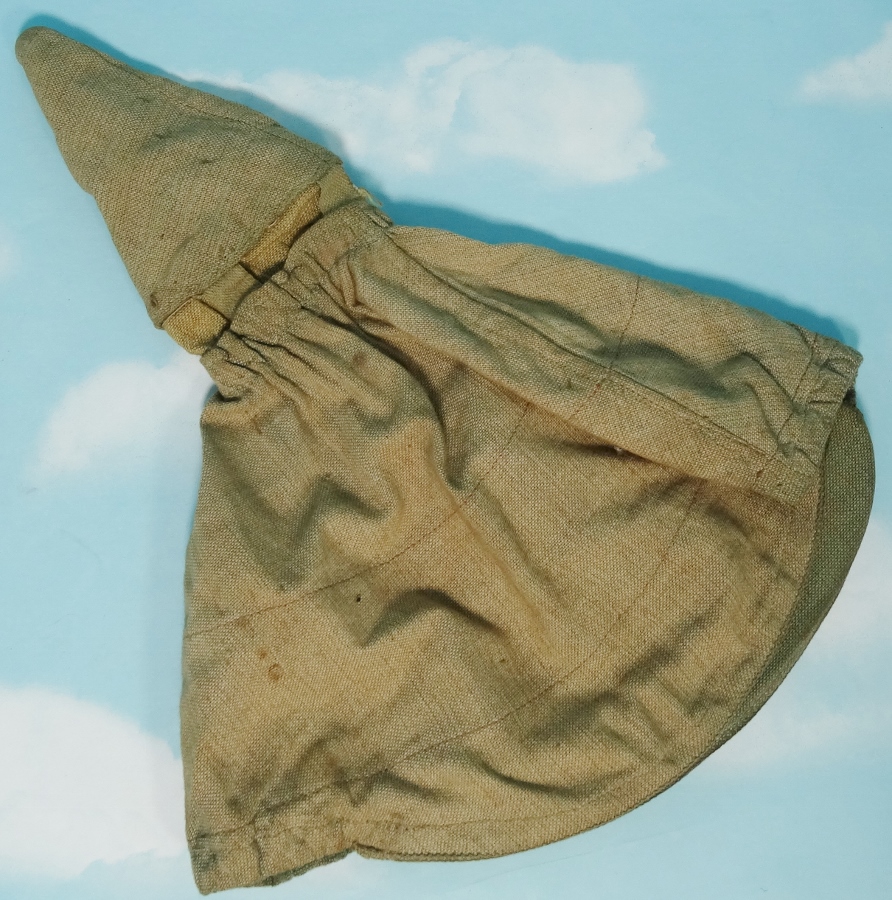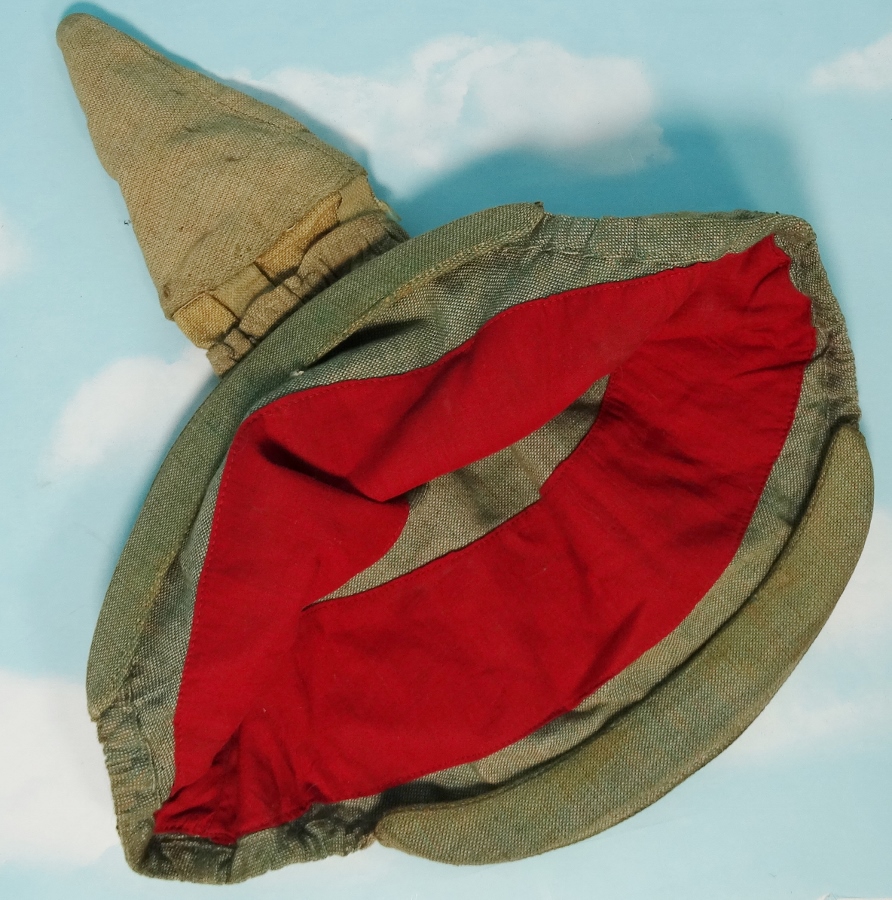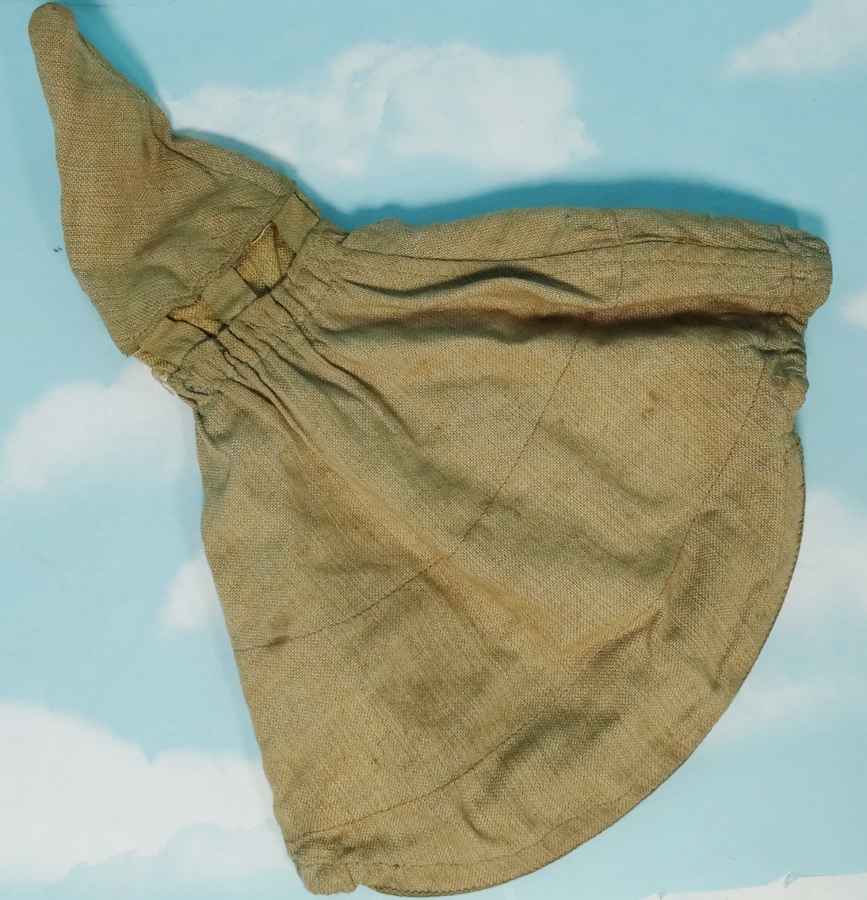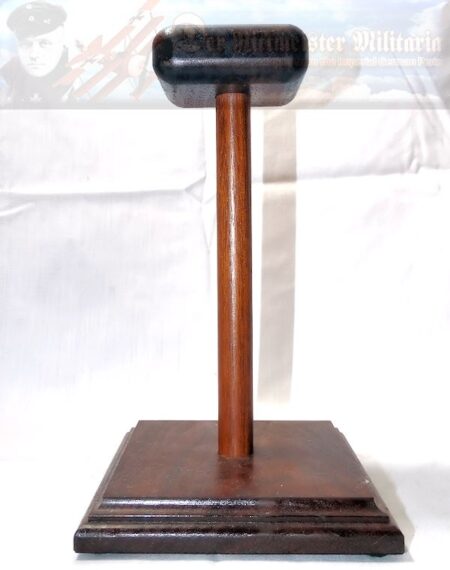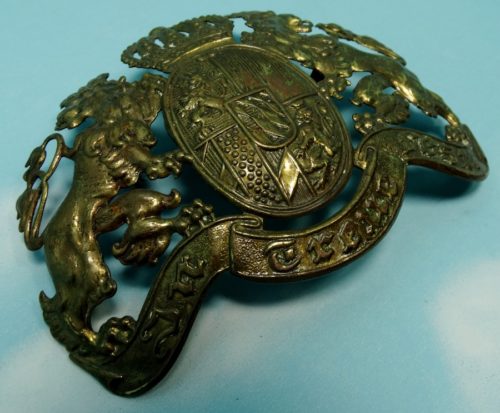Description
The canvas covers worn on pickelhauben were pre WW I items that initially were used on helmets to protect them from foul weather in the field. As the war progressed, they were used not only to protect the helmets from foul weather, but to hide the pickelhauben’s bright and shiny state wappens, which provided excellent targets for enemy snipers. As the army expanded and more soldiers entered the field, the M-1915 pickelhaube came into use. Their wappens were subdued (more gray in color) to solve the problem. In 1916, the first of the M-1916 stahlhelme were introduced. The pickelhaube was removed from field service and were only worn at home for parades, etc. Today we are offering an interesting officer’s foul-weather canvas cover for a spiked helmet. Its exterior is the normal gray. When one looks inside, however, one spies a red stripe encircling it. This indicated it was worn by an officer who was acting as an umpire during Field Maneuvers. Along its inside rim, a manufacturer’s stamping is visible, although it is very faint. This type of cover is actually quite scarce, and it is in very solid condition.
